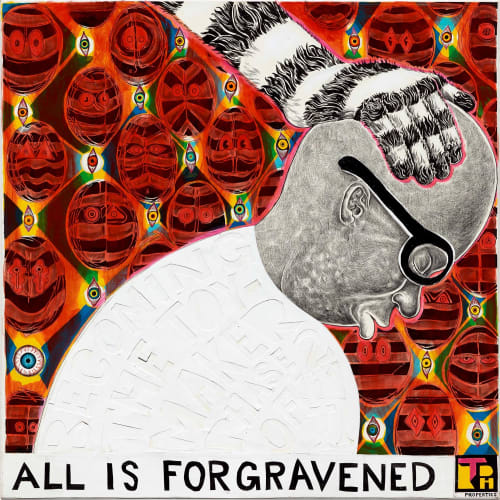In a self-portrait titled Becoming the Toy Maker (all works 2018), we see a haunt- ing rendition of a prodigal son being anointed by a colorless hand. While the religious symbolism is pronounced, the piece— included in Trenton Doyle Hancock’s solo show at Shulamit Nazarian—also operates as latent commen- tary on creating art and the existential questions around who artists serve. It’s unclear whether the artist is “coming home” to the world of comics and graphic novels that influenced his career, or if he’s grappling with his place in the commercial art world, but if we use Hancock’s lore and thematic body of work as a guide, that ambiguity appears intentional. His work revolves around characters that eschew categoriza- tion, and they pave the way for the artist to challenge our compulsion to define the art world through binary constructs. By creating access points to his work through high and low art, Hancock allows the space for viewers of his work to meet somewhere in between, revealing a world where distinctions between the
two are unnecessary.
For his first solo show in Los Angeles, titled An Ingenue’s Hues and How to Use Cutty Black Shoes, Hancock introduces an L.A. audience to the characters he’s been depicting for years in a mythical universe he calls the Moundverse. The show guides viewers through Hancock’s fantastical world in a series of paintings that use text and vibrant color to represent the two energies that govern his work: the stark rigidity of dogma and the fluid pliancy of love.
As a young artist influenced by comics, pop culture, and Greek mythology, Hancock received critical and institutional acclaim when his work was featured in back-to-back Whitney Biennials in 2000 and 2002. His fictional universe revolves around a species of half plant, half human mutants called the “Mounds” who are introduced through a series of 12 enlarged ink panels of the first chapter of an epic graphic novel currently in progress.

